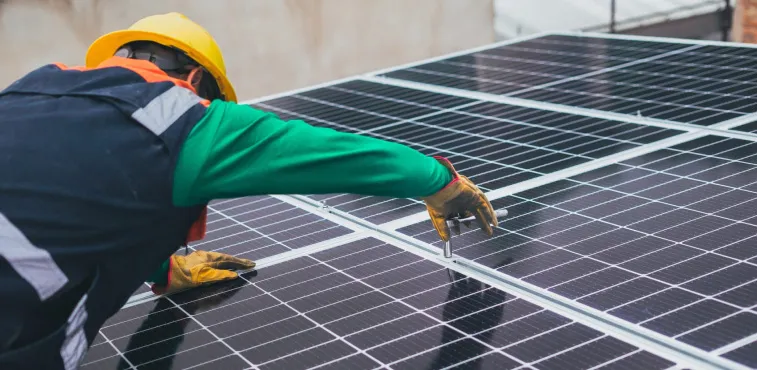Xando Energy

You can choose solar as a renewable and sustainable energy source. The technology behind this type of energy involves photovoltaic cells and panels. Here is how solar energy works:
Energy conversion begins with the technology of photovoltaic cells. These cells, often called solar cells, convert sunlight directly into electricity. This process is known as the photovoltaic effect. The photovoltaic effect occurs when certain materials, called semiconductors, absorb photons (particles of light) and release electrons. This creates an electric current.
Photovoltaic cells are most commonly made from silicon or other semiconductors with properties that make them ideal for solar energy conversion. They design these cells with a p-n junction. This is a boundary between the semiconductor material's positively and negatively charged layers. When sunlight hits the cell, it ignites electrons in the material. This allows them to move across the p-n junction and create an electric current. The solar panels then collect and utilize this current as electricity.
A single photovoltaic cell can produce only a small amount of electricity; the power of solar energy comes from combining many cells into larger units. These units are solar panels or solar modules. These panels are carefully arranged to maximize the energy they capture. The panels are often connected in series or parallel configurations to achieve the desired voltage and current levels.
Solar arrays can range in size from small residential installations to large utility-scale solar farms. The arrangement and orientation of the panels play a significant role in optimizing energy production. The team at Xando Energy typically positions panels to face the sun directly and at an angle that aligns with the local latitude to absorb as much sunlight as possible.
One of the challenges with solar energy is that the sun isn't always shining. We can address this by using energy storage systems like batteries. These storage systems are becoming key components of solar installations. We can store excess energy generated during sunny periods in batteries when the sun is unavailable. This allows a more consistent and reliable energy supply.
The law requires energy systems to integrate with the electrical grid, excluding special cases where there is no electrical infrastructure. When a solar installation produces more electricity than is consumed, the surplus energy can be fed back into a grid. This process is also known as net metering. A homeowner or business owner becomes both a consumer and a producer of electricity, and this has the potential to offset their overall energy costs.
If you're considering switching to this type of energy source, here are some steps to follow to make the transition seamless:
Before installation, you'll typically consult with us to assess your energy needs, roof suitability, and other factors. We will design a customized system that best fits your home's requirements.
We can mount your panels on your roof, garage, or ground-mounted frames in areas with ample sunlight. Our installers securely place the panels and properly align them to maximize energy capture.
Panels generate direct current (DC) electricity, but most homes use alternating current (AC). An inverter is a key component that converts the DC electricity the panels produce into AC electricity compatible with your home's electrical system. These microinverters also allow you to take advantage of panel level monitoring, which we offer as a complimentary lifetime service.
The AC electricity produced by the solar panels is then routed through the inverter to your home's main electrical panel. The solar energy is then integrated with your existing electrical setup. Other steps, like installing a net metering system and connecting a grid, may be added depending on the application.
At Xando Energy, we can walk you through how solar energy works to bring electricity to your home. Our expert team can assess your solar needs and provide tailored solutions. Contact us today to learn more about our services.